

The Art of Deep Listening
The Link Between Nutrition and Child Behaviour
Practical Wellbeing Habits for Educators



The Link Between Nutrition and Child Behaviour
Practical Wellbeing Habits for Educators

Backed by over 60 years of claims experience, Guild Insurance noticed an uptick in water damage claims at early learning centres in the last 10 years. Guild works proactively to reduce customer risks, and this increase prompted us to investigate how we could better help our customers lessen their risk of water damage, while keeping their business insurance premium increases to a minimum. Fortunately, there are devices available that can be installed by licensed plumbers that monitor for unexpected water flow and stop it
before it causes damage. To test the effectiveness of these devices, we launched a leak-stopping device pilot with 10 of our customers and 2 suppliers, Water Secure Co. and Aqua Trip. The pilot was successful with multiple pilot participants discovering first-hand a reduction in water damage and related costs.
Paul Mondo, President of the Australian Childcare Alliance, and owner of Bimbi ELC in Airport West, Victoria, participated in the pilot and thanks to the Water Secure app notifying Paul of unusual water flow, he was able to
limit the potential water damage to just one broken pipe and keep the doors open, saving the service from certain flooding that would have required the centre close for repairs.
Become part of something bigger today, scan the QR code to learn more and access our preferred provider discounts on leak-stop devices.

ACA Qld
Location: 6 Paxton Street, Springwood Qld 4127
Mailing: PO Box 137, Springwood QLD 4127
Telephone:
07 3808 2366
Toll Free: 1300 365 325 (outside Brisbane)
Web: www.qld.childcarealliance.org.au
Email: qld@childcarealliance.org.au
Disclaimer:
Executive
President - Majella Fitzsimmons
Vice President - Jae Fraser
Treasurer - Louise Thomas
Executive Secretary - Debra North
Dene Crocker
Pam Maclean
Kylie Petersen
Peta Pitcher
Brent Stokes
Darlene Wadham

Writing these President’s Reports and prioritising what to showcase in the Early Edition is always a tricky task. The ACA Qld Committee and I are constantly undertaking work that advances our sector. Our steadfast mission to ensure every Queensland child has the best start in life is truly unwavering, and our commitment to supporting Approved Providers and the workforce to achieve it runs deep.
Since January, we have had two face-to-face meetings with ACA National and our federation bodies, in Canberra and on the Gold Coast. We are designing and implementing strategic policy to plan and prepare for reforms and imminent changes in child safety. We continue to advocate for our sector, as core members of the Department of Education:
• RAC Regulatory Authority Committee
• Communications Group
• Strategic Advisory Group
One of the most significant milestones this year has been the release of the Statement of Shared Commitment –Every Interaction Counts, a joint initiative between the Queensland Regulatory Authority and the ECEC sector. This statement underscores the collective responsibility of all ECEC professionals to ensure positive experiences and interactions for every child. It emphasises that child safety is paramount and that every staff member is a mandatory reporter, with a duty to address concerns regarding children’s wellbeing.
In the same light, we enter a new partnership with the Queensland Family and Child Commission to deliver a free professional development project, Safe Spaces, Strong Voices. This program will support the long day care sector to fulfil its obligations under the Child Safe Organisations Act. Implementation for our sector is required by January 2026.
We also welcome and congratulate the government on the Healthy Kindy Kids program, which is a critical step forward in supporting the health and wellbeing of young children during their crucial early years. This program recognises what those of us in the early learning sector have known for a long time: the earlier we can support a child’s health, development and wellbeing, the better the long-term outcomes, and we are glad our advocacy contributed to this critical work.
Lastly, it would be remiss of me not to mention and celebrate our wildly fun and engaging conference. This year’s conference was about re-energising our collective voice, sharing knowledge, and exploring new ways to lead with intent and impact. With over 1,800 ECEC
professionals, over 100 exhibitors, and a dynamic lineup of keynote speakers and panel sessions, the 2025 conference was inspiring and empowering. Next year, the conference moves to Brisbane, and we can’t wait to see you there on 26 - 28 June 2026.
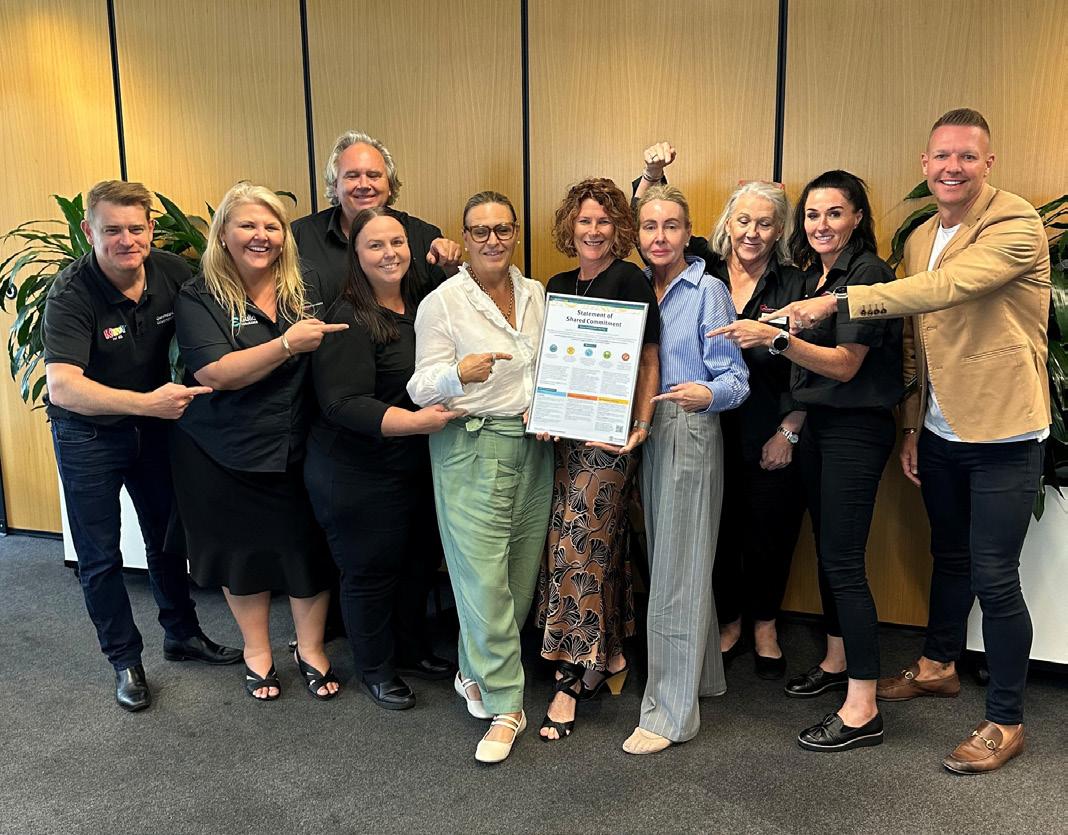
As the year progresses, ACA Qld remains committed to being a strong, informed, and collaborative voice for the early learning sector. We will continue to work closely with the government and other key stakeholders to address emerging challenges.
We thank all our members, partners, and stakeholders for their unwavering dedication and support. Together, we are shaping the best start in life for Queensland’s children.
Majella Fitzsimmons ACA Qld President
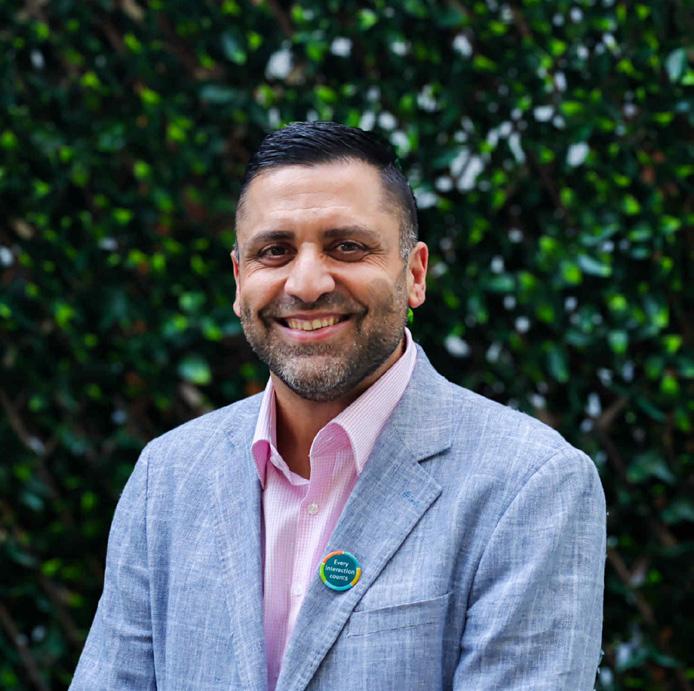
With the federal election results now finalised, the Australian Childcare Alliance (ACA) is now focussed on building on our existing relationships with the re-elected government and working collaboratively towards securing a positive future for our sector.
While there continues to be much debate around a proposed $10-a-day funding model, which were refuelled by Prime Minister Albanese’s informal comments on this topic in the media, there is currently no policy commitment in place to implement this idea.
The government’s decision on this matter will largely depend on the Service Delivery Price project, with the findings not expected until late 2026.
In December of last year, the ACA commissioned an analysis of adopting a supply-side funding model and a comparison to the aged care sector. We released the resulting report to stakeholders and the media, clearly expressing our concerns on the risks of getting this type of funding model wrong.
We believe that presenting clear research, economic analysis, and real-world impact assessments is essential to advocate effectively for the sustainability, quality and accessibility of Australia’s early learning services.
Our goal is to ensure that the government’s policymakers fully understand the potential implications of such a funding model, and to advocate for a funding structure that supports the long-term viability of our sector, while prioritising the best outcomes for children and families.
I would like to thank those of our members who recently participated in some focus groups we ran, to seek member feedback on the proposed policy options aimed at making early learning services even safer for children.
We greatly appreciated this valuable feedback, which we have incorporated into a formal submission on behalf of our members to the Child Safety Review Public Consultation. Your insights are instrumental in helping us advocate for effective and meaningful safety improvements within the sector.
With the interim gender-based undervaluation decision also announced, and a need for a commitment of long-term funding beyond the Worker Retention Payment, there is still much work to do in this term of Federal Government.
We’re proud of our political influence to date, in ensuring that our beloved early learning sector remains viable and continues to provide high-quality, accessible education and care for children and families across the community.
On a final note, we’re in the process of putting things in place behind the scenes to make sure this year’s Early Childhood Educators’ Day celebrations are truly special right across the country.
If you haven’t started thinking about how you might celebrate with your team this year, now is a great time to put your thinking caps on and make sure you’re ready for it in a few months.
ACA is deeply proud of this national community event, and the wonderful work of our early childhood educators.
We look forward to celebrating their valued contributions to the early learning sector and reaffirming our commitment to supporting this vital profession.
Paul Mondo ACA President

Beth Borowsky > The Karma Class
Listening is a skill. Active listening, which involves giving our full attention to the speaker, validating their feelings and responding with empathy, helps build trust and emotional resilience. It allows the speaker to feel safe, unjudged and heard.
In today’s frenetic world where our attention is often shared with a device of some kind, active or intentional listening has become a rarity. Yet, research and expert insights show that active, empathic listening is essential – not just for communication - but also for our emotional, mental and physical wellbeing.
Active listening is a crucial skill for all of us to practice, and exceedingly important for us to practice with early learners. It helps to lay the foundation for their emotional, cognitive and social development. When adults listen with full attention, children feel seen and heard, essential for their developing sense of self. They feel as if their thoughts and feelings matter, essential for building confidence and self-expression. They feel safe and secure, essential for building trust and enthusiasm to engage in meaningful conversations. It also strengthens their language skills and enhances cognitive development.
But when children are faced with a parent or caregiver who has one ear on their device and another on them, the message is they’re not that important. When the adult in their life is preoccupied, they may feel overlooked or
emotionally neglected. And when this becomes more of the norm, it can lead to feelings of insecurity, anxiety, and difficulty managing those bigger feelings and emotions.
We all thrive on emotional connection. When young children don’t receive adequate attention, they may struggle with self-regulation, emotional expression, and building healthy relationships later in life. Language development may be hindered as they learn communication through responsive, engaged interactions with the adults in their life.
The connection between listening and mental wellbeing is profound. New York psychiatrist and co-founder of Narativ, Dr Paul Browde, stresses that the act of deep listening counters the isolation many of us experience. “In a world filled with noise - both literal and metaphoricalmany people are starved for the experience of being truly listened to,” he says. This lack of deep listening often leads to loneliness, depression and alienation.
He teaches that intentional listening - both to ourselves and others - significantly improves mental health. Listening - without the need to fix or respond immediatelycommunicates safety and encourages open and vulnerable conversation. It’s not just a cognitive activity; listening involves the whole body. It supports stress reduction and overall emotional wellbeing.
Listening does more than allow us to hear words; it creates space for deep connection where people feel heard and can heal. Dr. Bessel van der Kolk, author of The Body Keeps the Score, emphasises that trauma disconnects people from their emotions and bodies. One critical step in healing, he explains, is the ability to communicate and be listened to. “Trauma almost invariably involves not being seen, not being mirrored, and not being taken into account,” he writes. Active, empathetic listening opens pathways for emotional expression and reflection, which are crucial for healing. Healing begins when someone can share their story and feel truly listened to.
Listening requires vulnerability - not just from the speaker but also from the listener. Brené Brown, social researcher, author and expert on vulnerability, argues that empathy is impossible without deep listening. Empathy, she explains, involves “feeling with people,” which requires setting aside our own thoughts to understand someone else’s emotions. Brown emphasises that empathy is not about offering advice or fixing problems but rather about acknowledging another person’s feelings. In her TED Talk, The Power of Vulnerability, she says, “Rarely can a response make something better. What makes something better is connection.” This connection is nurtured through listening with empathy, allowing both the speaker and listener to feel more connected and understood.
Neuroscience shows that meaningful conversationswhere we truly feel heard - release oxytocin, the ‘happy’ hormone, which in turn reduces stress and promotes feelings of trust and connection. In contrast, feeling unheard triggers the release of cortisol, the stress hormone, which can lead to chronic stress and illness.
Dr. Stephen Porges, known for developing the Polyvagal Theory, explains that feeling safe in relationshipsachieved through listening - activates the parasympathetic nervous system, which promotes relaxation and healing. Listening is not only crucial for our emotional health but also has a direct impact on our physical wellbeing by calming the nervous system.

The challenges of Listening in our world today
Despite its clear benefits to our mental, physical and emotional wellbeing, deep listening seems to be a rarity these days. “True listening, the kind that creates change and connection, is slow and deliberate,” says Brené Brown. But we’re living in a culture that focuses on - and applauds - productivity, quick fixes and multi-tasking.
We are all the worse off for it and our little ones are suffering greatly.
Learning to listen deeply, and with intention, takes practice. Here are a few tips to help you on your way with both the adults and children in your life:
1. Be Present
Focus fully on the speaker, avoiding distractions like phones or screens.
2. Practice Empathy
Try to understand the emotions behind the words.
3. Resist the Urge to Respond Immediately
Often, all a speaker needs is to feel heard, not advised. Listen fully before replying.
4. Reflect and Validate
Repeat back what the speaker has said to ensure your understanding and to show you’re fully engaged.
5. Create Safe Spaces
Foster an environment where your team and children feel safe to share openly.
Conclusion
Listening is more than a passive act of hearing words; it’s an active, engaged practice that promotes emotional, mental and physical wellbeing. The power of true listening is undeniable. As we learn to listen more deeply and intentionally, we open the door to greater health and wellbeing, stronger relationships, and a more compassionate society.
This is the world I hope for us all, and especially for our little ones.
Beth Borowsky is the Founder and Head of Wellbeing Education at The Karma Class, a company dedicated to elevating wellbeing culture within centres with transformational (and accredited) PD and kids yoga classes. Beth is a mum, former Montessori pre-school teacher and lecturer, and one of Sydney’s most inspiring kids and adult yoga teachers, teacher trainers and retreat leaders. Her passion is to inspire others to live a life of health, vitality and joy through daily practices that keep us all thriving.
Michelle Stanley > Teacher, QCCS Prince Charles Group
Our kindergarten children had their very first unforgettable day at Trevena Glen Farm.
The excitement began with a bus ride to the farm, where the friendly staff warmly welcomed us. After a quick morning tea, our children were divided into color-coded groups and set off to explore with the effervescent and informative farm tour guides. The farm came alive with the sounds of our very excited children as they met a variety of gorgeous animals. They patted some cheeky alpacas, observed hens laying eggs, and marvelled at beautiful horses, sweet donkeys, cute sheep, darling guineapigs and rabbits, and giant piggies. Our highlight was the tractor ride through the gardens, where we all learned about growing food for the animals.
Throughout the day, our children were in awe as they absorbed valuable lessons about water conservation, animal care, and farm safety. They engaged in group activities, fostering teamwork and cooperation. The amazing hands-on experiences encouraged critical thinking and problem-solving, while interactions with guides and peers enhanced their language skills. Amidst the fun, our children also enjoyed a picnic lunch, adding to the day’s adventure. Our excursion was a perfect blend of education and entertainment, leaving lasting impressions on our beautiful children, their families who attended, and our educators. We can’t wait to visit again!
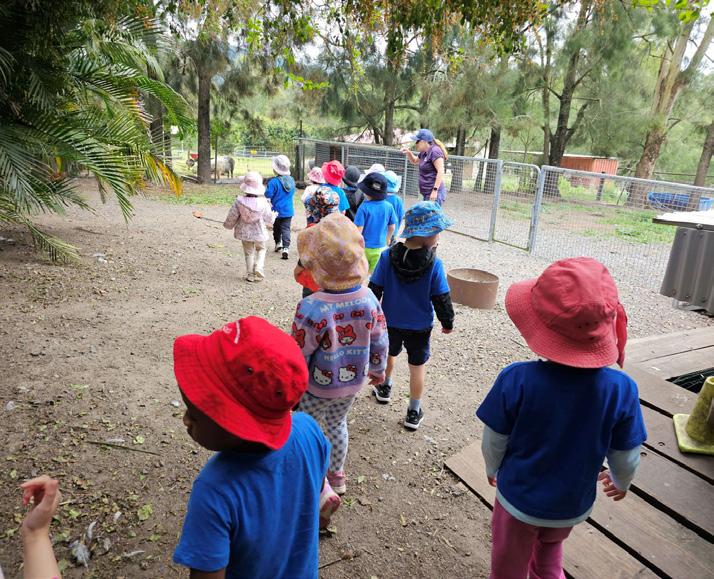
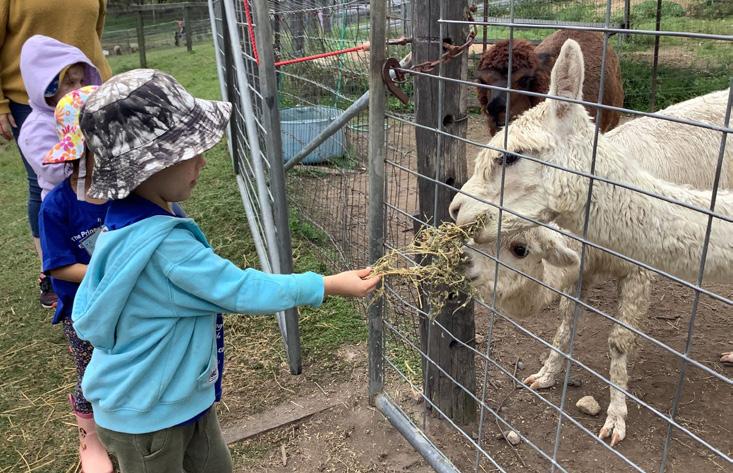
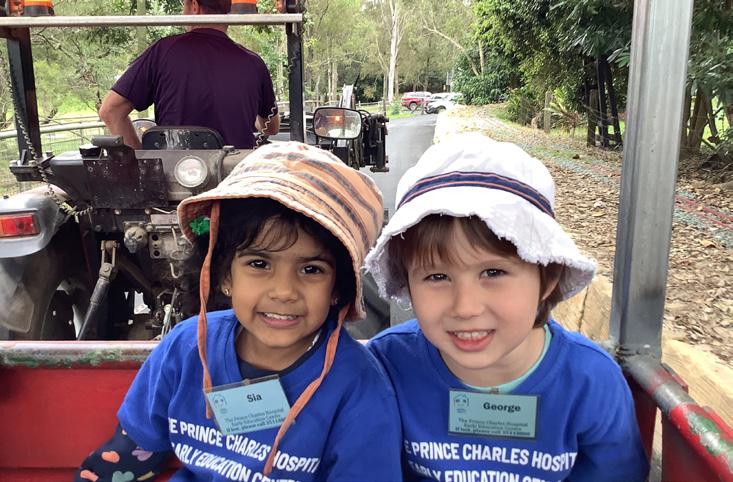
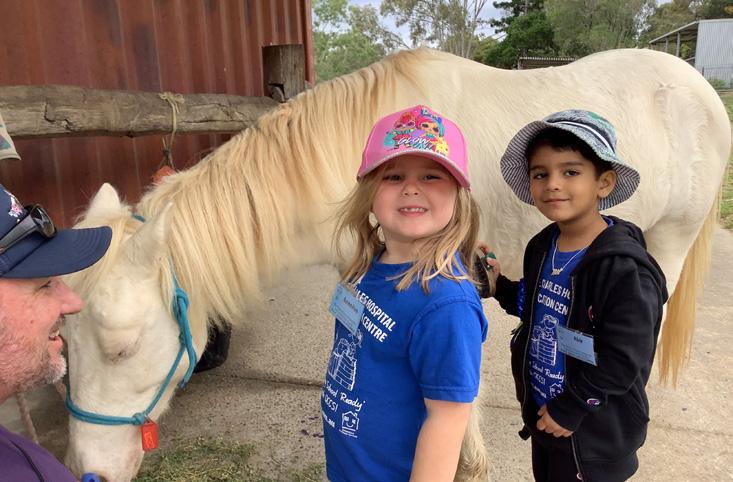
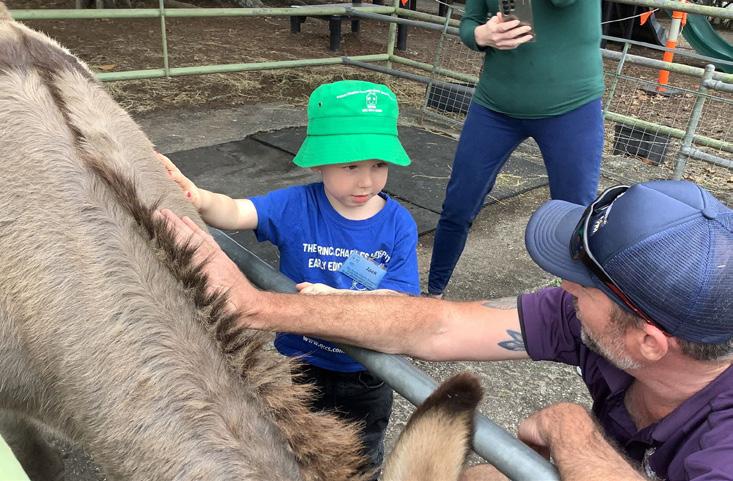

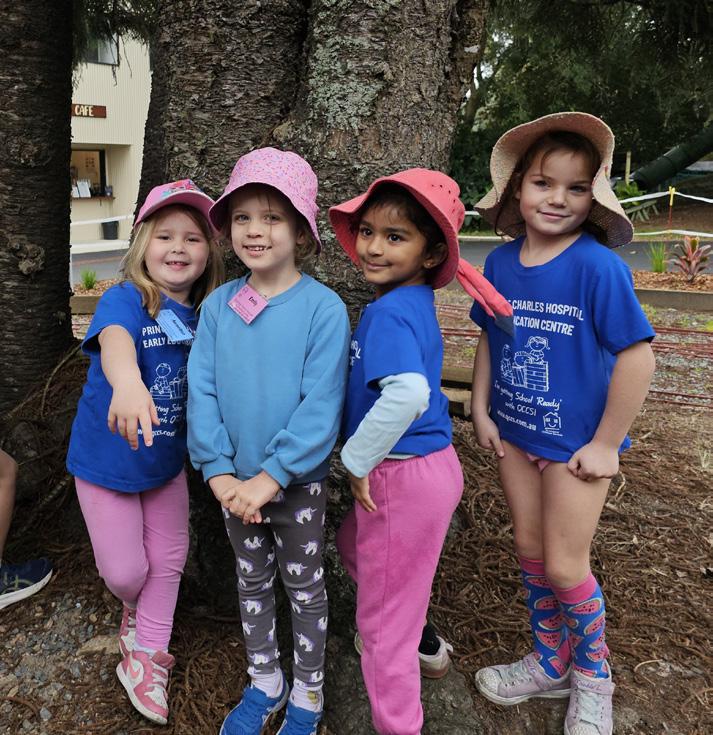
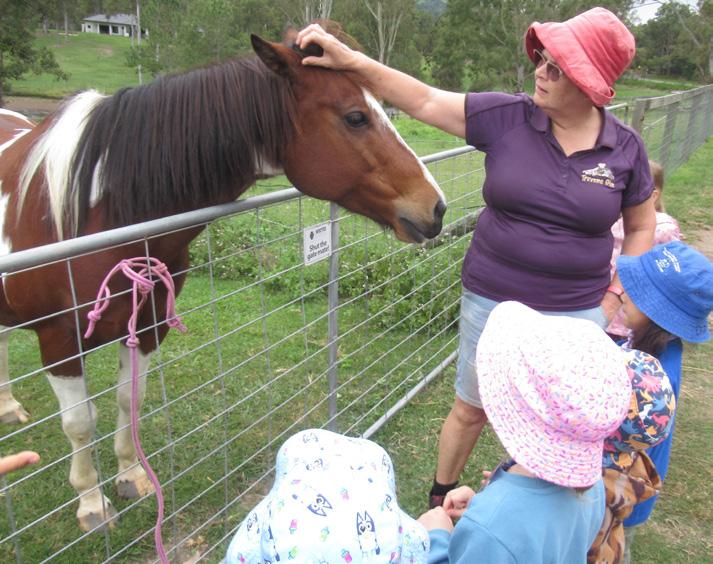


Nicole Buettel > OSCAR Care Group

Have you ever had your mind boggled over the mystery of how little ones seem to have boundless energy one moment and then suddenly crash into grumpiness the next? Well, wonder no more! Nutrition plays a starring role in shaping the behaviour of children, and understanding this dynamic can support the growth of children and navigate their fluctuations in behaviour.
Depending on the types of foods that children are consuming, they can act as behaviour boosters or turn them into little mischiefs. We’ve all had this similar experience - consuming something sugary and feeling a burst of energy, followed by a crash that could make us cranky. Now imagine this feeling twice fold. Nutrition can influence children more than adults because of their growing bodies and developing brains, making them more sensitive to the foods they consume.
The simple answer is no! Studies have not been able to find individual nutrients to improve behaviour, due to the fact that nutrients work together rather than alone. Packing meals and snacks with a variety of whole foods - think fruits, vegetables, whole grains, and lean proteins will provide the little ones with a steady stream of energy that doesn’t ebb and flow, which translates to a steady behaviour that doesn’t fluctuate a million times in one day!

When a child has a meltdown, we often point the finger at the food that is on their plate. We may automatically think that they are throwing a tantrum because of that broccoli that they don’t like. However, that’s not always the case, especially if you find that they enjoy it one day and suddenly hate it the next.
Other factors to consider include recognising if the child skipped a meal (timing) or didn’t have enough to eat (amount). This can leave them feeling irritable, tired, and hangry (hungry + angry)! If you find that your child is exhibiting similar behaviours around the same time every day, it might be time to investigate whether their tummies are satisfied or needing a bit more sustenance.
Eating balanced, regular meals will help to regulate their blood sugar, which can influence some of the hormones within their little bodies to control mood and concentration. Poor mood and behaviour have often been found in children who have a big gap between meals or snacks, such as if they haven’t had breakfast.
Childcare Menu Makeover
Adapting childcare menus to accommodate children with challenging behaviours feels like a challenge, but it doesn’t have to be. Building a balanced menu that is suitable for all kids is a feat. Follow these guidelines to support your planning!
• Have a regular flow of snacks available to combat any hungry monsters.
• Try to avoid using discretionary items such as cakes as snacks, as they could trigger a sugar rush and crash.
• Include a portion of each food group (lean meat, vegetables, fruit, dairy, and grains) into their meals where possible to encourage variety and balanced nutrition.
• Make it a treat for the eyes! When a meal is plated in a visually appealing way, it can stimulate appetite.
• Have space for flexibility - being able to respond to any feedback from the children or family can be helpful in adapting the childcare menu to meet their needs and preferences.
• Organising some fun activities involving food - create a piece of art using a rainbow of fruits and vegetables
Still feeling a bit lost? You’re not alone! Support is all around. Dietitians are a great resource with their expertise in child nutrition and behaviour, they can offer personalized advice and support to ensure every child thrives, both inside and out.


Recognition is one of the most powerful tools that leaders can use to boost morale, foster a positive culture, and drive overall performance.
It goes without saying that employees who feel valued and appreciated are more engaged, productive, and loyal. But when it comes to recognition, one size does not fit all. Understanding how both formal and informal recognition is an effective way for leaders to keep their teams engaged and valued.
In my professional experience, recognition and appreciation is often overlooked by leaders – so I wanted to explore the nuances of these two types of recognition and provide guidance on how to integrate both into your people strategy.
Formal recognition typically involves structured programs or events that are planned, budgeted, and aligned with company objectives. This type of recognition is often public and follows specific guidelines to ensure consistency across the organisation.
Examples of formal recognition include:
• Annual awards ceremonies: Recognising employees for their achievements over the year, often with trophies, certificates, or monetary rewards.
• Milestone celebrations: Acknowledging work anniversaries, project completions, or significant contributions with a formal event or reward.
• Employee of the Month programs: Offering a prestigious title and associated benefits to employees who stand out for their performance.
• Performance-based bonuses: Financial rewards tied to an employee’s performance metrics or achieving specific company goals.
Benefits of formal recognition:
• Visibility and prestige: Formal recognition often occurs in front of peers and leadership, offering employees public acknowledgment.
• Consistency and fairness: When criteria are clearly defined, formal recognition ensures fairness and avoids bias.
• Motivates high performance: Formal recognition often comes with tangible rewards, which can drive employees to excel.
However, because formal recognition tends to happen on a set schedule or for major accomplishments, it may not always capture the day-to-day contributions that also deserve appreciation. This is where informal recognition comes in.
Informal recognition is spontaneous, often personalised, and usually doesn’t involve elaborate ceremonies or big rewards. It’s a more flexible and frequent way to express appreciation for an employee’s efforts or behaviour, typically occurring in the moment.
Examples of informal recognition include:
• A simple “thank you”: Verbally acknowledging an employee’s hard work on a specific task or project.
• Team shout-outs: Highlighting an employee’s contribution during team meetings.
• Handwritten notes: Personalising appreciation with a note or card to an employee.
• Social media posts: Recognising employees on internal communication platforms to share their achievements with the broader team.
Benefits of informal recognition:
• Timely appreciation: Informal recognition happens in real-time, making it effective for acknowledging small, everyday wins.
• Builds stronger relationships: Personalised, informal gestures show genuine care and foster stronger employee-manager relationships.
• Cost-effective: Since informal recognition doesn’t typically involve monetary rewards, it’s an affordable way to keep employees engaged.
However, informal recognition may not always carry the same weight or prestige as formal recognition, and if not done consistently, it can lead to perceptions of favouritism or neglect.
To create a truly engaging workplace, leaders should aim for a balance between both formal and informal recognition approaches. Each serves a unique purpose and caters to different employee needs and circumstances.
What methods do you use to recognise your team?
Recognition in the workplace is a powerful driver of employee engagement and satisfaction. If you think this is an area of your organisation or people strategy that requires more attention, reach out to Resolve to assist you in implementing meaningful recognition programs for your people and your broader business goals and objectives.
Nick Hedges is the founder of Resolve HR, a HR consultancy specialising in providing workplace advice to managers and business owners. He recently published his first book, “Is Your Team Failing Or Kicking Goals – Take Control of Your People & Their Performance”. It is a practical response to the most pressing HR challenges, which can be found at https://resolvehr.com.au/
Disclaimer:
The contents written do not constitute legal advice and does not cater for individual circumstances. The information contained herein is not intended to be a substitute for legal advice and should not be relied upon as such.


Your people are your greatest competitive assets, but they're not "hard" assets, they're "soft" assets Unlike your other assets, they think for themselves and have potential that you could be tapping into with the right strategies and tactics
Tapping into a higher performance level is one thing, but what do you do with people who are underperforming? How do you take control of your people and performance to ensure the greatest growth for your business?
In this book, Is Your Team Failing or Kicking Goals? Nick addresses 10 critical issues every business trader must address to effectively manage their team
In this transformative book for business leaders, you'll discover:
How to put the right systems in place to ensure that your underperformers don't "fall through the cracks" of your organisation
How to lift the performance of your people so they continue to achieve their targets now and into the future
Why avoiding or minimising the emotionally-charged issues like bullying and harassment can have significant legal impacts and hurt your brand
The benefits of cultivating meaningful professional relationships to developing a highperforming culture
Understanding how your team's behaviour and performance affects the bottom line For over 15 years, Nick has been helping business leaders refine their approach to developing top performers and addressing underperforming team members within their organisations


Farran Street Education
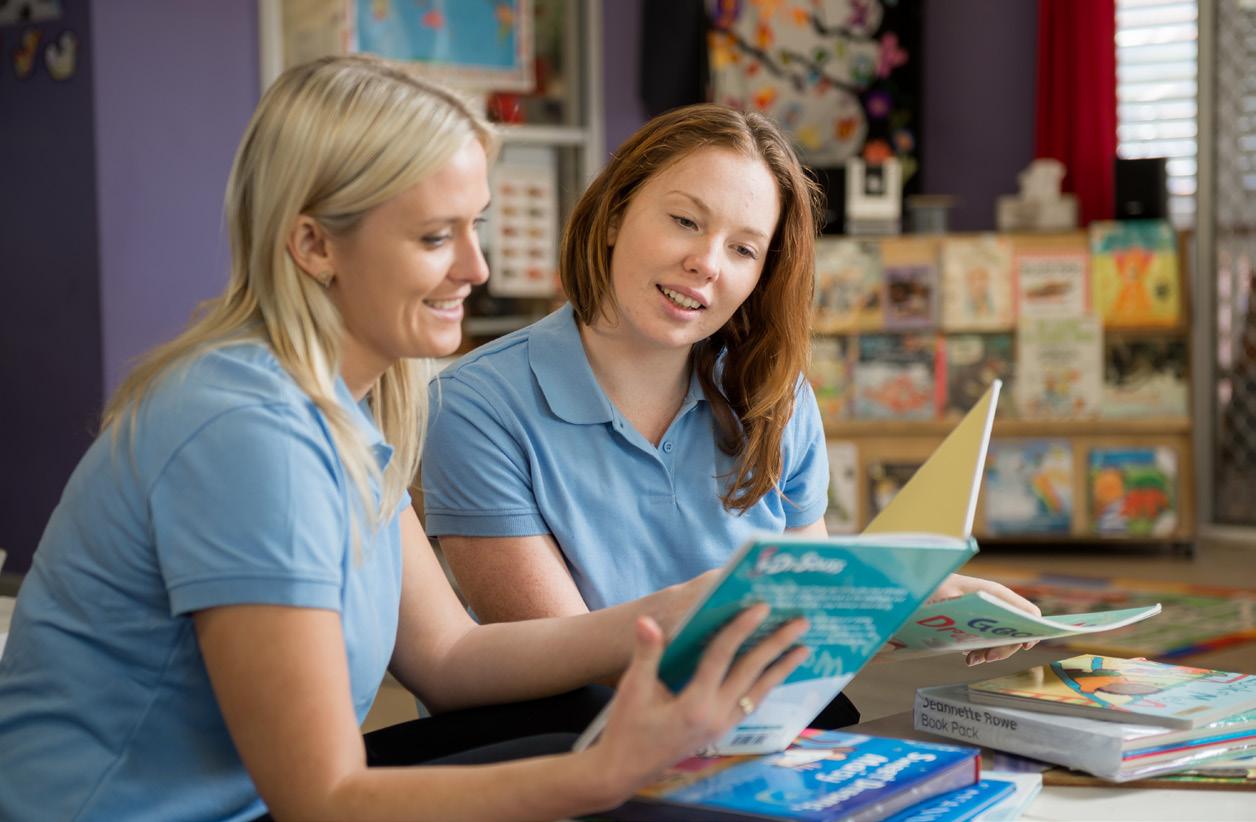
The success of any team rests on one powerful foundation: attitude. These are the invisible strings that pull us together or tear us apart, the unspoken rhythms that guide how we think, act, and create.
This year, let’s embrace five transformative attitudes. Each one holds the power to breathe new life into our teams, fuel our goals, and strengthen our sense of belonging. At the heart of this lies the “Between the Flags” framework—a simple yet powerful concept that provides clarity and structure. Just as lifeguards use flags to mark safe swimming areas, teams can use this framework to define the attitudes and behaviours they expect from one another. It ensures everyone operates within agreed boundaries of respect, support, and accountability, creating a safe and collaborative environment.
Importantly, these attitudes thrive within the “Between the Flags” framework—a collaborative agreement where teams define and uphold the behaviours and mindsets they expect from themselves and each other. Let’s explore these attitudes which shape not only individual success but also team harmony.

Consider an educator during a chaotic morning routine. They notice a colleague struggling to settle a group of children. Instead of continuing with their own tasks, they pause, step in, and offer assistance: “Let me help gather the children for a story so you can focus on the activity setup.” This small act not only relieves immediate stress but sets an example of collaboration.
Looking for opportunities to help requires attentiveness. For instance, a team might assign a rotating “Support Lead” role—someone responsible for observing team needs throughout the day and proactively stepping in. Another example is sharing expertise during team meetings, such as offering practical tips on managing transitions or engaging children with diverse needs. These actions show a commitment to lifting others without overshadowing them.
Incorporating this mindset into team culture strengthens bonds. Within the “Between the Flags” framework, this attitude ensures a culture where everyone is attentive and ready to support—a foundation for trust and mutual respect.
To encourage this attitude, leaders can introduce practical strategies like mentorship programs, team knowledgesharing sessions, and open-door policies. Reward systems—such as peer recognition awards for collaborative problem-solving—can reinforce the value of stepping in to help. Within the “Between the Flags” framework, this attitude ensures that every team member knows they can rely on each other for support without fear of judgment. This shared commitment transforms individual confidence into collective strength.
Life is not a static painting; it’s a flowing river, constantly changing, carving new paths. The attitude of “I can learn and grow” is about stepping into that current with courage and curiosity. It’s the belief that every mistake is a lesson, every challenge a opportunity.
This attitude can be supported by creating professional development opportunities tailored to educators. Workshops on emerging practices, access to coaching, and time for reflective practice sessions signal that growth is valued. The “Between the Flags” framework reminds teams to stay kind and supportive while pushing each other toward growth. Leaders can further support this mindset by celebrating effort and learning as much as results, ensuring no one feels overwhelmed or left behind.
The road ahead isn’t always smooth. Sometimes it feels like walking through a dense forest, the path obscured by tangled branches and shadows. But those who see possibilities rather than obstacles carry a torch. They illuminate the path not just for themselves but for everyone around them.
When faced with setbacks, like a tight deadline or limited resources, it’s tempting to focus on what’s going wrong. But this attitude flips the script. Instead of saying, “We can’t,” it asks, “What if?” It’s the mindset that turns roadblocks into stepping stones.
A practical way to foster this is structuring team meetings around solutions rather than problems. For example, incorporating brainstorming sessions that reward creative ideas or celebrating small wins when challenges are overcome helps build resilience. The “Between the Flags” framework reinforces this by ensuring team conversations remain constructive, with shared agreements to focus on solutions rather than blame.
Energy is contagious. Walk into a room buzzing with positivity, and you feel it. Enter a space clouded by negativity, and it weighs you down. EYLF 2.0 emphasises that “Children and families are attuned to the work culture of an early childhood setting, which influences their relationships, interactions and experiences within that setting.”
The attitude of accountability for your energy is about recognizing that you set the tone for your team.
Think of a time when you were part of a team where someone’s negativity drained the atmosphere. Contrast that with a leader whose enthusiasm and focus lit a fire in everyone’s hearts. The difference is night and day, and it starts with each of us.
Management can foster this attitude by embedding practices like regular well-being check-ins, promoting self-care, and encouraging gratitude among team members. Awards for positive team contributions or team-building activities that reinforce shared values can also help maintain a constructive emotional environment. The “Between the Flags” framework ensures everyone is aware of their role in shaping the team’s emotional tone and provides a safe space for open conversations when energy falters.
Expectations are like the wind beneath a kite. Too low, and nothing soars. Too harsh, and everything collapses. The attitude of “I have high expectations of myself and others” is about striking the balance that lifts us to greatness.
Educators recognise the value of holding high expectations for children’s learning but too often managers accept mediocre expectations for their team. Picture a manager as a coach who believes in their team’s potential. They push, not to break, but to build. They demand effort, dedication, and excellence, not out of
criticism, but out of faith in what’s possible. When you hold yourself to high standards and encourage others to do the same, you create a culture of mutual respect and shared ambition.
High expectations can be reinforced through structured goal-setting and performance appraisals focused on growth. Leaders need to hold Educators accountable for their tasks and attitudes. Team agreements within the “Between the Flags” framework ensure expectations remain motivating, not overwhelming, creating a balanced culture of challenge and support.

The five attitudes are calls to action. They challenge us to look inward, transform our mindsets, and elevate our teams.
When these attitudes are upheld within the “Between the Flags” framework, they become shared commitments, creating environments of trust, collaboration, and growth. This framework ensures that teams move forward together, guided by clear expectations and supported by collective effort.
Book Farran Street Education’s 2-hour in-house workshop, “Between The Flags” for your team. http://farranstreeteducation.com.au/betweenthe-flags/
Angela Lee Jenkins > Organisational Wellbeing Consultant

As we embrace the second half of the year, it’s the perfect time to refocus, reset, and prioritise our wellbeing.
For you, as an early childhood educator, your mental, physical, and emotional health is foundational not just for yourself but for the care and learning you provide for children. Your wellbeing is essential to everyone who depends on you, and it’s equally important that you feel supported by your team, leaders, and organisation. Together, we can create environments that nurture and uplift you, ensuring you have the resources and encouragement needed to thrive.
Enter the concept of “Wellbeing in the Small Things,” which emphasises how small, intentional habits can have a ripple effect on your overall wellbeing. By focusing on manageable changes, you can regain a sense of control and agency, building momentum for larger shifts over time. This article offers practical strategies you can implement today to support your wellbeing, with an understanding that small steps pave the way for meaningful change.
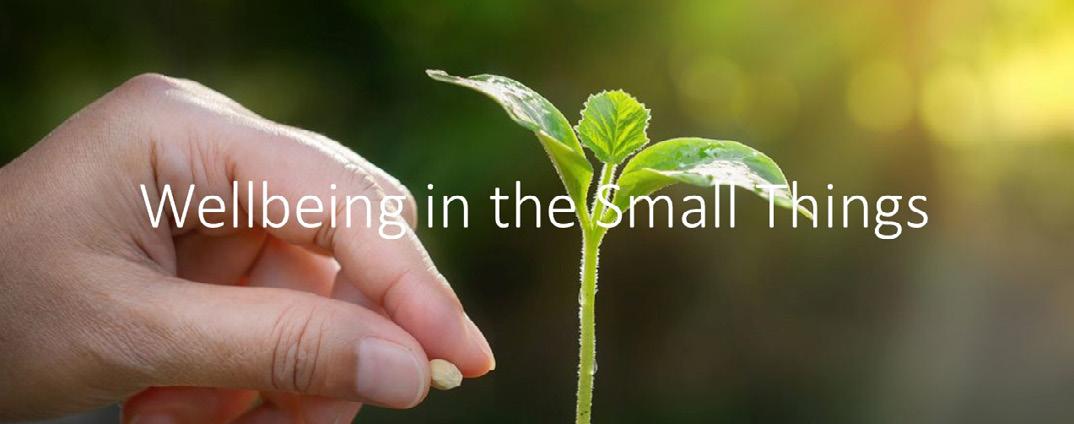
Change doesn’t have to be overwhelming. Science tells us that small, consistent actions are the building blocks of lasting transformation. The concept of “tiny habits,” popularised by behaviour scientist BJ Fogg, shows that when changes are made simple and achievable, they’re far more likely to stick.
As an early childhood educator, you can feel stretched thin, and these small steps are critical. When you’re feeling “blah,” starting with something small can help you regain a sense of control and mastery. Meeting even one goal—no matter how minor it may seem—can fulfill core psychological needs for competence and autonomy, making you feel more empowered.
For example, incorporating a 60-second breathing exercise into a busy day or spending five minutes outside having a ‘green break’ can shift your mood and build resilience. The beauty of small habits is that they’re realistic, achievable, and often lead to bigger changes.
How you start your day sets the tone for everything that follows. Research shows that establishing a consistent morning routine is linked to reduced stress, improved focus, and a greater sense of control. A well-designed morning routine can be especially powerful, helping you prepare mentally and emotionally for the demands of the day ahead.
Here is a part of my “Will to Liv” framework I teach and use myself:
• Wake: Mindfully greet the day by taking a moment and a few deep breaths (instead of reaching for our phone)
• Intend: Set a positive intention for the day, such as “I will approach challenges with patience” or “I will focus on the joy of teaching.”
• Love: Place your hand on your heart and cultivate some love for yourself and send out to those around you
• Live: Commit to showing up as your best self for the children, your colleagues, and yourself.
(Then as we go about our day - ‘LIV’: Let go, Ignite joy, Value the moment.)
We are responsible for the energy we bring into our work environment. By beginning our day with intention and care, we can set ourself up for greater success and fulfilment.
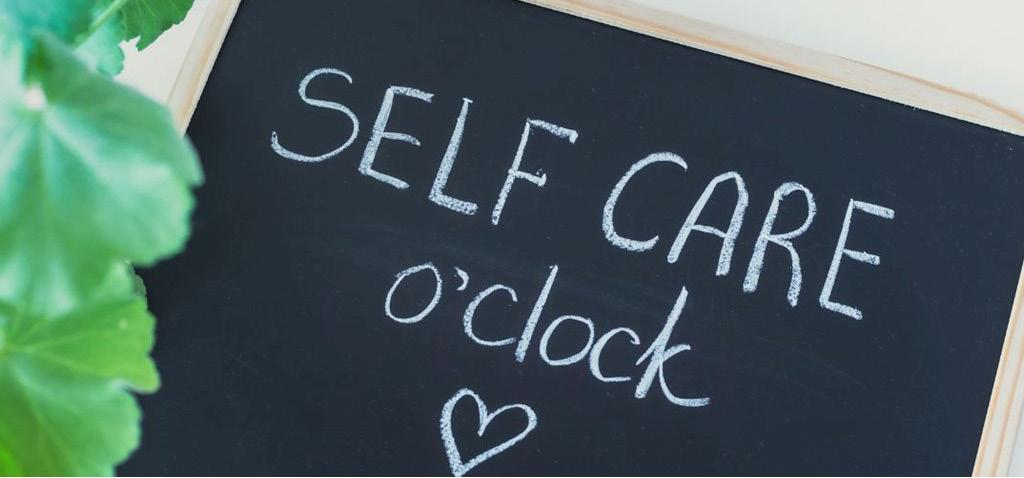
Looking after your emotional and mental wellbeing requires our ongoing attention.
Practicing gratitude is one such habit that has a profound impact. Research shows that regularly focusing on what you’re thankful for can boost your mood, reduce stress, and even improve sleep.
Try starting a simple gratitude habit: at the end of each day, write down one magical moment you experienced with the children. It might be a child’s laughter, a moment of connection, or a small success in the classroom.
Another tool to support emotional wellbeing I like from the heart math institute is “compassionate latitude.” This term encourages you to view yourself and others with more understanding and less judgment. For example, instead of reacting harshly when a mistake is made, pause and ask, “What might they be going through?” or “How can I offer support?”
Finally, address unhelpful thoughts by challenging them. Thoughts are not facts, even when they feel true. When negative thoughts arise, pause and ask yourself, “Is this really true?” or “Could there be another perspective?”
Reframing challenges by asking for example, “How can I approach this differently?” can reduce stress and open up possibilities for growth.

Purposeful wellbeing stems from connecting to your deeper “why” and finding meaning in what you do. For some, this might involve fostering a sense of belonging within the classroom, encouraging teamwork, or nurturing a love of learning in children. These meaningful aspects of your role remind you of the positive impact you have on others.
To connect with this purpose, reflect on your values. For example, if one of your core values is kindness, look for ways to model this with colleagues, families, and children. Small actions, such as offering words of encouragement to a colleague or creating moments of connection with children, can reinforce your sense of purpose and bring fulfillment.
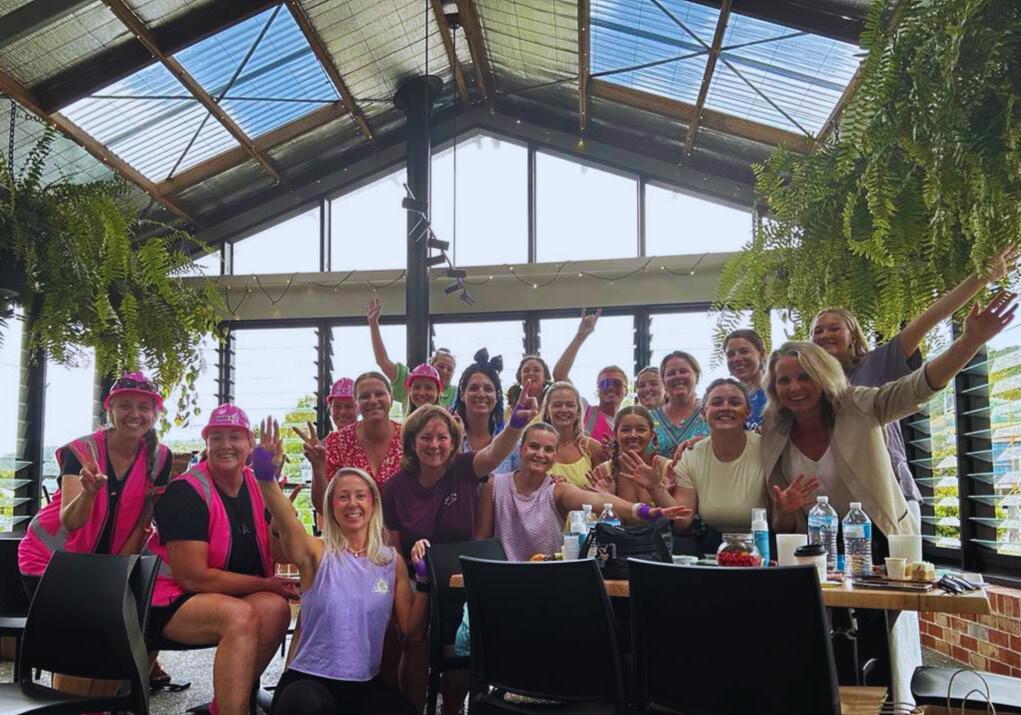
Additionally, consider journaling about a moment when you felt aligned with your purpose at work. Revisiting these reflections can help you stay connected to your “why,” even during challenging times.
Wellbeing doesn’t have to mean sweeping lifestyle changes. Small habits—a breathing exercise, a gratitude journal, or a moment of self-reflection—can create lasting, meaningful impact over time.
As you start this new year, focus on one small wellbeing habit to make part of your daily routine. These small changes will not only benefit you but also ripple outward to positively impact the children, families, and colleagues around you.
While this article focuses on practical habits you can adopt for your own wellbeing, it’s important to recognise that leadership wellbeing, centre-wide support, and organisational policies play a critical role in fostering a healthy work environment. These components form the foundation for sustainable change. I’ll explore this more in future articles, but for now, let’s start small with steps you can take today
For more organisational strategies, workshops, and leadership wellbeing development, or to experience these practical strategies firsthand, feel free to reach out. Together, we can create thriving environments for educators and the children they nurture.
Angela Lee Jenkins
Organisational Wellbeing Consultant www.angelaleejenkins.com


Sustained population growth and support for childcare participation continue to promote childcare centre construction opportunities, especially in Southeastern Queensland. In that context, construction costs and trends are considerations for operators assessing their growth potential and strategic options.
Below, we provide some related insights on the Queensland childcare centre construction pipeline and childcare construction costs alongside some considerations for builders and setting a project up for success.
The construction pipeline
Construction tender listings over the last three years suggest some recent contraction in the pipeline, granted such data does not give us visibility over the entire market.
Yet higher costs for land, materials, labour, and financing may have only dampened some, not all, appetites.
Based on experience with our clients and observation in the broader market, as well as external data, we continue to see ongoing childcare centre construction activity in Queensland and around the country.
Indicative construction costs
Construction costs on a per place basis help paint a clearer picture of project fundamentals. Based on a sample of third party external data from the last 12 months, indicative maximum construction costs per place for Queensland overall range from ~$40k to ~$60k; metro, from ~$43k to ~$69k; and regional, from ~$34k to ~$46k per place.
A combination of factors including location and ease of access for tradespeople as well as differences in design and materials likely accounts for the variation in these ranges. And as with the costs in any project, complexity is another fundamental driver. More atypical, complicated projects including those involving basement excavation are expected to entail higher costs. Indicative costs for such projects invariably sit above the average and are reflected in the upper quartiles (see Chart).
Chart: Indicative maximum construction costs ($k) per place for Queensland

Despite earlier post-pandemic spikes in labour and material costs having abated, anecdotally, there are still pockets of Queensland where builders face more pronounced challenges in sourcing labour and tradespeople, including the Sunshine Coast, Gold Coast, and other regional areas. Completion of major infrastructure projects may free up some capacity. Though we still expect that many builders (and subcontractors) will continue to focus on non-residential projects—and even extend that focus further, assuming opportunities arising in connection with upgrading accommodation and other amenities for the Brisbane Olympics.
With builders in Queensland potentially facing a solid backlog of work over the short- and medium-term, and many demonstrating a preference for commercial projects, focused and direct, early engagement with a builder should help set a project up for success.
This is especially important in the current environment in Queensland where many builders, given a full slate of projects, may not be as active in looking at tender opportunities as in the past.
Moreover, such engagement is crucial in the current climate as builders are typically prioritising non-residential projects with profiles suggesting lower risk and higher returns (stemming largely from warranty considerations, not having to co-ordinate as many trades, and lower levels of risk around delays and cost-overruns).
As our State Construction Manager Michael Berrell explains, “Early contractor involvement is critical as so many builders just have too much work on. Directly approaching a preferred builder and negotiating terms exclusively remains a preferred option for contractors, and in many instances, developers.”
Of course, we have also observed childcare groups with building and development capability in-house driving persistent success.
Irrespective of whether such capability already exists in-house or is contracted in from outside, having building and development capability on board is another essential prerequisite for those embarking on a construction project.
Ultimately, engagement with experts is a critical factor ensuring a project’s success.
Cameron Brown
Senior Relationship Manager (QLD)
ANZ Commercial Health & Property 0401 992 583 | cameron.brown@anz.com
Joshua McMillan
Relationship Manager (QLD)
ANZ Commercial Health & Property 0466 446 190 | joshua.mcmillan@anz.com i
All information contained in this communication is based on information available at the time of publication. While care has been taken in the preparation of this communication ANZ does not make any representation as to the accuracy of the information contained in it.
This is general information only, so it doesn’t take into account your objectives, financial situation or needs. ANZ is not giving you advice or recommendations (including tax advice), and there may be other ways to manage finances, planning and decisions for your business. Carefully consider what’s right for you, and ask your lawyer, accountant or financial planner if you need help.
Any opinions expressed in this document are subject to change at any time without notice.
© Copyright Australia and New Zealand Banking Group Limited (ANZ) 2025 ABN 11 005 357 522.


Chelsea O’Neill

In the fast-paced environment of Early Education, efficiency is key. From managing compliance and maintaining a safe learning space to supporting children’s development, the demands on staff and managers are significant. One area often overlooked in operational management is the number of suppliers a centre engages with for essential resources. Reducing the number of suppliers and consolidating purchasing with professional vendors can lead to better outcomes, including time savings, reduced stress for managers, and cost efficiency.
Using multiple suppliers might seem like a way to secure the best prices, but it often results in higher administrative costs. Each supplier requires time to negotiate terms, place orders, coordinate deliveries, and process invoices. For centres juggling dozens of suppliers, the burden on staff, managers, and accountants adds up quickly.
Each additional invoice, order, and negotiation creates extra work that increases the overall cost of goods, even if individual prices appear lower. For example, processing hundreds of invoices per month requires more resources, diverting time and effort from essential responsibilities such as supporting educators or engaging with families.
Solution: Consolidating suppliers streamlines these processes, allowing managers to focus on core priorities. Some suppliers may also offer easy re-order options on their website, recurring purchase of essential items or an invoiced issued once a month. All these efficiencies really add up.
Partnering with professional suppliers who can meet most of a centre’s needs simplifies procurement. Some professional vendors offer comprehensive solutions tailored to the childcare sector, such as cleaning products and equipment, office supplies, office furniture,
commercial kitchen equipment and consumables, first aid, and educational resources. By working with these vendors, centres can access high-quality supplies designed for compliance with childcare regulations.
Solution: Professional suppliers can often negotiate better prices when a centre consolidates its purchasing. By bundling orders across multiple categories, centres gain leverage to secure discounts, creating a win-win relationship that benefits both parties.
Managing multiple suppliers can be stressful for managers who already balance numerous responsibilities, including ensuring compliance with the National Quality Framework (NQF), supporting staff, and maintaining positive relationships with families.
Frequent supplier interactions, chasing late deliveries, and resolving discrepancies add unnecessary pressure. For example, sending staff off-site to purchase emergency supplies is not only disruptive but also reflects gaps in planning and procurement processes.
Solution: Streamlining supplier relationships allows managers to maintain better control over operations, avoid last-minute scrambles, and ensure resources are consistently available. With fewer suppliers, there is greater reliability and predictability in delivery schedules, reducing interruptions to day-to-day activities.

Engaging with professional suppliers ensures access to high-quality resources and equipment specifically designed for early learning environments. Budget retail options, while seemingly cost-effective, may lack durability or fail to meet the developmental needs of children.
For example, toys sourced from budget outlets may break easily or carry a stigma of being “cheap,” which can reflect poorly on the centre’s professionalism. Parents may view these choices as inconsistent with a centre’s commitment to providing high-quality care and education.
Solution: Professional suppliers offer durable, developmentally appropriate toys and resources. Investing in quality sends a clear message to families about the centre’s values and commitment to excellence.
Budget-friendly products, particularly toys, often fail the test of sustainability. Their short lifespan means they need frequent replacements, creating additional waste and driving up long-term costs. Even if marketed as environmentally friendly, products that break quickly are neither financially nor ecologically responsible.
Solution: Durable resources not only reduce replacement costs but also align with environmentally sustainable practices. By consolidating purchases with suppliers who prioritise quality and sustainability, centres can create lasting value for their investment.
Compliance with workplace regulations, such as Safe Work Australia’s GHS standards, is critical in early learning centres. Household-grade cleaning products commonly found in retail stores do not meet these standards, exposing centres to potential legal and safety risks. Professional suppliers provide products designed for the childcare environment, ensuring compliance and safety. For example, GHS-compliant cleaning products include clear labelling and appropriate hazard communication, essential for maintaining a safe workplace.
Solution: By consolidating orders with professional suppliers, centres ensure they are using the right products while reducing the risk of non-compliance.
Time is one of the most valuable resources in an early learning centre. Managing procurement across multiple suppliers consumes time that could be better spent supporting children’s learning or staff professional development.
Staff sent off-site for retail shopping lose time that would be more effectively used within the centre. Similarly, managers juggling supplier communications and logistics are less available for strategic planning or addressing family concerns.
Solution: Consolidating suppliers simplifies procurement, reduces time spent on administrative tasks, and keeps staff focused on their roles.
Relying on multiple suppliers or retail outlets can leave centres unprepared during emergencies. Supply shortages or delivery delays can disrupt operations, particularly for essential items such as cleaning supplies or personal protective equipment.
Solution: Trusted suppliers often prioritise childcare centres in times of high demand, ensuring consistent access to necessary products even during crises.
By simplifying procurement, reducing administrative costs, and investing in high-quality resources, centres can improve efficiency, enhance their reputation, and focus on what matters most—providing exceptional care and education for children. Through proactive negotiation and strategic partnerships, centres can build reliable, costeffective supply chains that support long-term success.

It’s just over a year since Standard 3.2.2A of the Food Standards Code came into force. So, where to from here?
In case you’ve forgotten, here is a brief reminder of Standard 3.2.1 and 3.2.2A as well as 3 things childcare providers need to do.
Standard 3.2.1 was introduced in December 2007 and applies to businesses that supply food to ‘vulnerable’ people. The criteria used to determine the businesses that must comply are set out in Standard 3.1.1.
Put simply, Standard 3.2.1 applies to businesses that supply food to hospital patients, the elderly and children. That’s because these groups are more vulnerable to food poising and face a higher risk of serious illness and death.
Under Standard 3.2.1, Childcare providers must engage an independent Food Safety Auditor and submit a Food Safety Program to their local Council for accreditation. Once accredited, they are then subject to on-site food safety audits and reports according to a schedule set by Council.
To help childcare providers meet the requirements of Standard 3.2.1, the Food Safety eLearning Academy developed a short online Course for staff - Standard 3.2.1 Training for Childcare & Aged Care
Despite this and other existing food safety standards, cases of food poisoning continued to climb with incidents of salmonella and gastroenteritis increasing by over 70% in the past decade.
By 2021, more than 12,000 Australians were falling ill from food poisoning every day – that’s around 4.5 million cases per year. This translates to around 40,000 hospitalizations and approximately 80 deaths with an economic cost estimated to exceed $2.5 billion each year.
The fact is every case of food poisoning is preventable. This forced Australia’s governing authority for food safety standards (FSANZ - Food Standards Australia/New Zealand) to act.
A national review identified poor food handling was the leading cause and Standard 3.2.2A was introduced in response.


Standard 3.2.2A requires all businesses that serve food to implement a set of food safety management tools designed to protect consumers. This applies to all childcare providers, even if parents prepare the food.
The 3 requirements of Standard 3.2.2A are:
1. Providers must have at least one fully trained Food Safety Supervisor.
2. Those providers not required to have a Food Safety Program must implement an alternative system to record and prove they comply with the food standards code.
3. All food handlers must be trained in food safety.
The legal definition of a food handler was made intentionally broad, to include anyone involved in preparing, cooking, serving, storing, or delivering food, as well as those responsible for cleaning equipment, utensils, and conditions around food preparation.
In response to the new laws, many RTOs introduced food handler training courses which they claim to be accredited. The cost of these range from $49 to over $100.
But the fact is there is no accredited food handler training course in Australia. Instead, the law requires this training to cover a minimum of 4 subjects - safe food handling, contamination, cleaning and sanitizing, and personal hygiene. It’s then up to the business owner to decide how this is done. To avoid industry resistance, state governments offer a free basic food safety training course on their health department websites.
The Food Safety eLearning Academy developed the CHILDCARE Food Handler (PLUS) Training Courses. This Course offers a comprehensive curriculum developed for compliance with Standard 3.2.2A and at $24.95 it offers the best value for money in the market.- Childcare Food Safety Training
• Food Safety Supervisors must be trained at least every 5 years.
• Those not required to have an accredited Food Safety Program must implement an official system to record and prove they operate according to the Food Standards Code and retain this evidence for at least 3 months.
• Ensure all staff are properly trained in food safety before they perform any of the listed tasks and maintain records to prove this has been done. As for how often staff must be trained on food safety? This is left for business owners to decide. Most have opted for every 1 to 2 years.



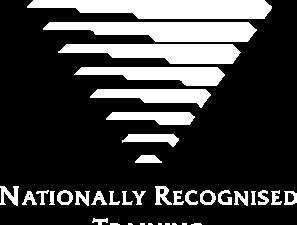
CAECE is delighted to present recent graduates who have completed their Certificate III in Early Childhood Education and Care and Diplomaloma of Early Childhood Education and Care.
Over the last quarter we have had the opportunity to congratulate CAECE graduates from our Diplomaloma and Certificate III qualifications. With the ongoing support from our lovely CAECE trainers, students have been guided to achieve their goals in becoming fully qualified educators.
If you, or someone you know, are interested in studying and working towards your qualifications in early childhood education and care, our friendly team and trainers are willing to guide and support your early learning journey! For more information please contact our team on 07 3299 5784 or email admin@caece.com.au
CAECE would like to congratulate the following graduates and wish them all the best for their future as an early learning educator!
CAECE graduates for the last two quarters:
Savanah: Children’s Choice
Early Education CentreCert III (Trainer Kellie)
Donna: Smart Start - Cert III (Trainer Kellie)
Mikealie: Greenleaves Hyde Park - Cert III (Trainer Lainie)
Angelica: Sunkids OxleyCert III (Trainer Ammie)
Noelene: Sunkids OxleyCert III (Trainer Ammie)
Ellyse: Little Scholars
Redland Bay South - Cert III (Trainer Brooke)
Brittany: Little Gems Lowood - Cert III (Trainer Gemma)
Benjamin: Little Legends
Dakabin - Cert III (Trainer Lynn)
Rebecca: Perfect Beginnings EMP 1 - Cert III (Trainer Sue)
Mahana: Noahs Ark Logan Village - Cert III (Trainer Elisha)
Katie: Little Scholars Ormeau
2 - Diploma (Trainer Melissa)
Sophie:Out & About
Newspaper Place - Cert III (Trainer Maria)
Aaliyah: Currumbin Pines ELC - Cert III (Trainer Gemma)
Elizabeth: Wandilla Magic Child Care Centre - Cert III (Trainer Gemma)
James: Cubby Care ELC
Coomera - Cert III (Trainer Sue)
Lily: Honour EL Park RidgeCert III (Trainer Elissa)
Imogen: Out & About
Newspaper Place - Cert III (Trainer Maria)
Leah: Busy Bees MitcheltonCert III (Trainer Sue)
Wendy: The Nest SouthportCert III (Trainer Melissa)
Jessica F: Goodstart Early
Learning Belmont - Cert III (Trainer Brooke)
Haylie: Bonny Babes
Coomera - Cert III (Trainer Holly)
Casey: Little Scholars Parkwood - Cert III (Trainer Holly)
Louise: Dolphin Ave Early Learning Mermaid BeachCert III (Trainer Gemma)
Isabella: Smartland Boutique ELC Mountain Creek - Cert III (Trainer Maria)
Bree: Sylvies ELC Townsville - Diploma (Trainer Lainie)
Akema: Kidz at the beach
Bowen - Cert III (Trainer Lorraine)
Stephanie: Little Scholars Redland Bay South - Cert III (Trainer Brooke)Somruthai: Emerald OSCH - Cert III (Trainer Lorraine)
Eliza: Everton Park ChildCare & Development Everton Park - Cert III (Trainer Sue)
Penelope: Guardian Greenbank - Cert III (Trainer Elisha)
Courtney: Guardian Burdell West - Diploma (Trainer Lainie)
Keily: Arden Early Learning Ormeau - Diploma (Trainer Ammie)
Michelle: Goodstart Early Learning Forest LakeDiploma (Trainer Elissa)
Torika: Honour EL Beenleigh - Diploma (Trainer Elissa)
Eden: Livingstone Christian College ELC - Cert III (Trainer Ammie)
Texas: Smart Start ELC - Cert III (Trainer Gemma)
Caroline: Galbiri Childcare & Preschool Centre - Cert III (Trainer Rachel)
Melissa: Treehouse ELC
Pimpama - Cert III (Trainer Melissa)
Rita: Clearview EL &
Kindergarten Nerang - Cert III (Trainer Holly)
Annabella: Guardian Childcare & Education Burdell WestCert III (Trainer Lainie)
Nadia: Cubby Care ELC
Beenleigh - Cert III (Trainer Melissa)
Nicola: Guardian Childcare & Education - Burdell WestCert III (Trainer Lainie)
Emma: Canopy DakabinCert III (Trainer Lynn)
Madeline: Kingdom Kids, Calvary Christian College Childcare Centre - Cert III (Trainer Sue)
Harrison: Harmony EL Balmoral - Diploma (Trainer Brooke)
Shaia: Smart Start ELCCert III (Trainer Gemma)
Emily: Kinder Cottage Childcare Centre - Cert III (Trainer Holly)
Brooke: Eagleby Kids Early Learning - Cert III (Trainer Holly)
Samara: Little Scholars Burleigh - Cert III (Trainer Ammie)
Ashleigh: Amazing EL
Beaudesert - Cert III (Trainer Elisha)
Nicola: Little Scholars Deception Bay - Diploma (Trainer Maria)
Rachel: Imagine Childcare
Holmview - Cert III (Trainer Elisha)
Aimee: Cubby Care ELC
Beenleigh - Cert III (Trainer Melissa)
Jodie: Little ScholarsLoganholmeCert III (Trainer Elisha)
Rebecca: Imagine Childcare Holmview - Cert III (Trainer Elisha)
Nipun: Goodstart Early Learning Stafford HeightsDiploma (Trainer Sue)
Jazmyn: Vickers Road Community Childcare Centre Condon - Cert III (Trainer Lainie)
Letitia: Free Range KidsGatton - Cert III (Trainer Belinda)
Lara: Little LocalsCollingwood Park - Cert III (Trainer Elisha)
Charli: Barefoot Early Childhood - Cert III (Trainer Lynn)
Leniesha: Goodstart Early Learning Belmont - Cert III (Trainer Brooke)
Delta: Milestone Jimboomba - Cert III (Trainer Elisha)
Cailtlyn: Clermont
Kindergarten - Cert III (Trainer Lorraine)
Alyssa: Bahrs Scrub ELCCert III (Trainer Melissa)
Savanah: Seeds ELC Shailer
Park - Diploma (Trainer Elissa)
Taylor: Guppy’s ELThuringowa - Cert III (Trainer Rachel)
Allyssa: Bahrs Scrub ELCDiploma (Trainer Melissa)
Isabelle: Bask Early Learning Springwood - Cert III (Trainer Sue)
Zoe: My Kindy Runaway Bay - Cert III (Trainer Holly)
Brooke: Eskay Kids
Springfield - Cert III (Trainer Gemma)
Keeley: Amaze BeaudesertCert III (Trainer Elisha)
Letishia: Kaleidoscope Logan - Diploma (Trainer Elissa)
Marlise: Smart Tots Mt
Cotton - Diploma (Trainer Brooke)
Corey: The Grove - Cert III (Trainer Lynn)
Jade: Little Scholars Ormeau 2 - Cert III (Trainer Melissa)
Chloe: Connections ELMoorooka – Diploma (Trainer Brooke)
Kelly: Little Scholars Ormeau 2 - Cert III (Trainer Melissa)
Sinead: Songbirds - Cert III (Trainer Ammie)
Bethany: Children’s Choice Heritage park - Cert III (Trainer Elisha)
Kadison: Little Scholars Ashmore - Diploma (Trainer Ammie)
Talitha: Arden Early Learning Ormeau - Cert III (Trainer Ammie)
Bree-Ann: Arden Early Learning Ormeau - Diploma (Trainer Ammie)
Samantha: Coomera Clubhouse 2 - Diploma (Trainer Holly)
Tracey: Coomera Clubhouse 1 - Diploma (Trainer Holly)
Devyne: Canopy DakabinCert III (Trainer Lynn)
Stacey: Goodstart Early Learning - Cert III (Trainer Lainie)
Hannah: Cornubia Park ELCCert III (Trainer Sue)
Kylah: Mt Isa Day NurseryCert III (Trainer Lorraine)
Lania: Sylvies ELCTownsville - Diploma (Trainer Lainie)
Lachlan: Hatchlings Caboolture - Cert III (Trainer Maria)
Jessica: Mt Isa Day Nursery - Cert III (Trainer Michelle)
Tiahna: Hatchlings Waterford - Cert III (Trainer Sue)
Tiara: Amazing GraceRailway Estate - Cert III (Trainer Lainie)
Jahrah: Amazing GraceNorthward - Cert III (Trainer Lainie)
Robert: Songbirds EL Pimpama - Cert III (Trainer Ammie)
Tia-Rose: Imagine Childcare Holmview - Cert III (Trainer Elisha)
Izabella: Little Scholars Yatala - Diploma (Trainer Melissa)
Anastasia: Coomera Club House 2 - Cert III (Trainer Holly)
Caitlin: Little Scholars Ormeau 2 - Diploma (Trainer Melissa)
Cherish: Hatchlings Caboolture - Cert III (Trainer Maria)
Ash-lea: Out & About Dalton Dr - Cert III (Trainer Maria)
Kate: Country Kids ELCCert III (Trainer Maria)
Tamika: Kids Club Montessori Highfields - Cert III (Trainer Belinda)
Emily: Seeds ELC - Diploma (Trainer Elissa)
Jasmin: Little Scholars Redland Bay - Cert III (Trainer Brooke)
Vanessa: Educating Kids
Domain - Cert III (Trainer Lainie)
Courtney: Little Scholars Ormeau 2 - Diploma (Trainer Melissa)
Minh: Little Ducks Childcare
Annerley - Diploma (Trainer Sue)
Ella: Little Scholars Ormeau 2 - Cert III (Trainer Melissa)
Zoe F: Burnett House ELDiploma (Trainer Gemma)
Perrin: The Hills MontessoriCert III (Trainer Brooke)
Tyson: Educating Kids Domain - Cert III (Trainer Lainie)
Alyssa F: Little Scholars Yatala - Diploma (Trainer Melissa)
Kiara-Lee: Milestones ELCCert III (Trainer Elisha)
Emily: Little Scholars Redland Bay - Cert III (Trainer Brooke)
Jasmine: Currumbin Pines EL - Cert III (Trainer Gemma)
Nikola: Kingdom KidsCalvary - Cert III (Trainer Sue)
Brittany: Plainland Kindergarten - Diploma (Trainer Belinda)

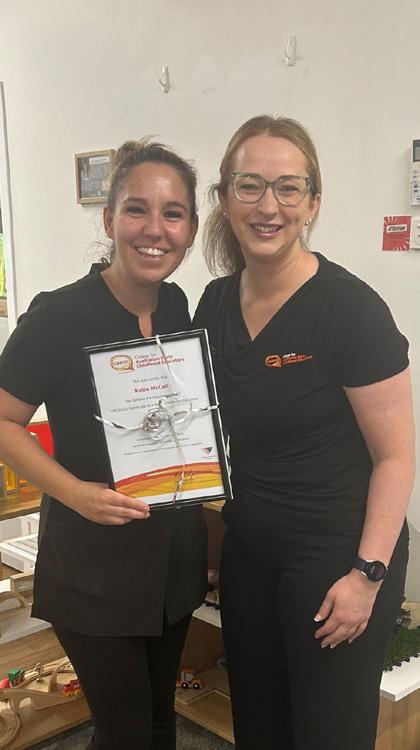
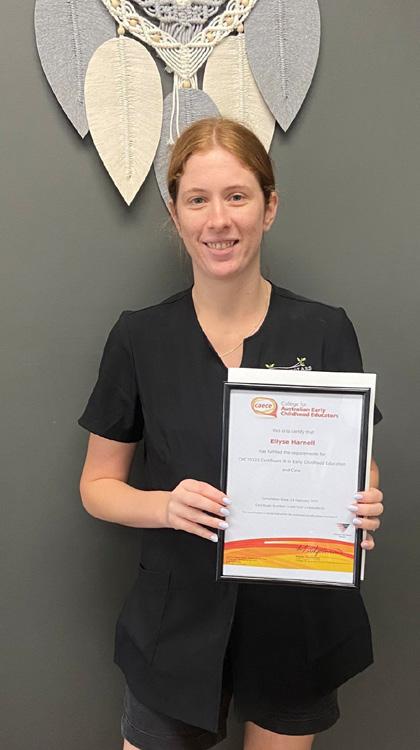


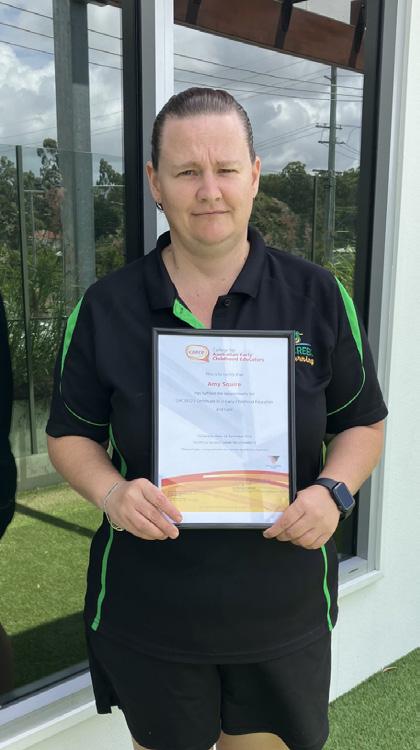
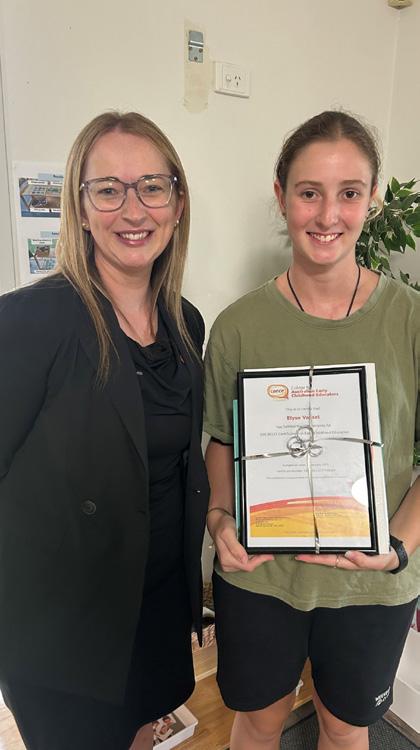
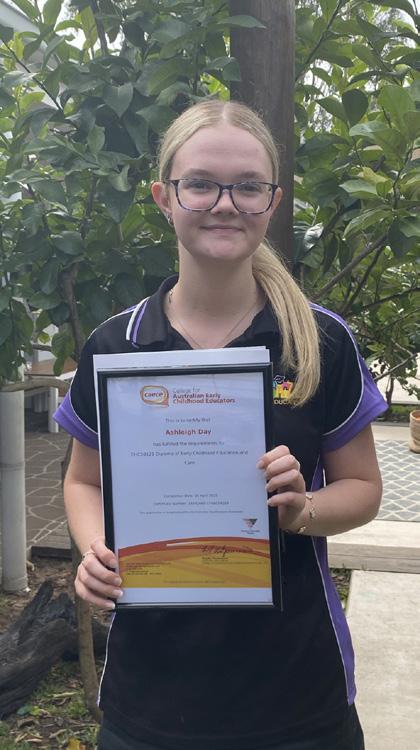
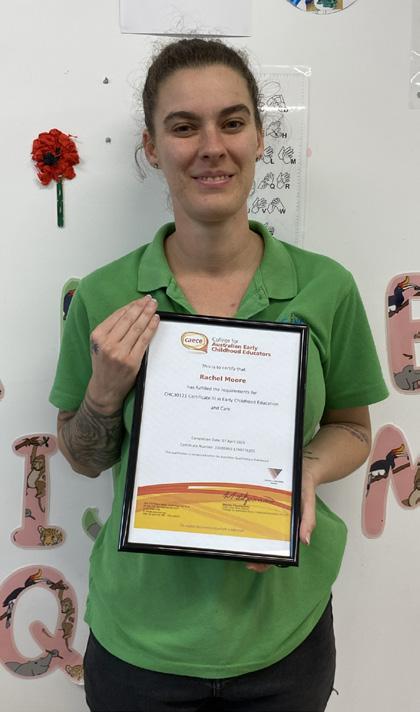
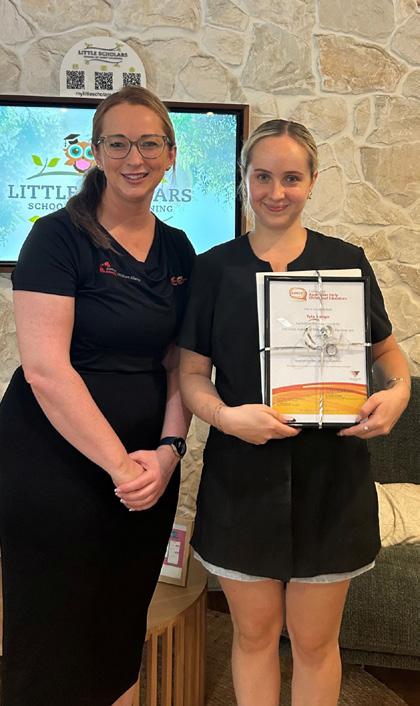
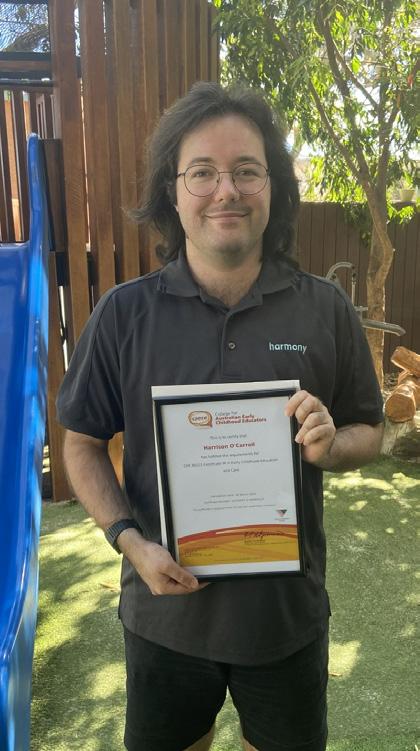


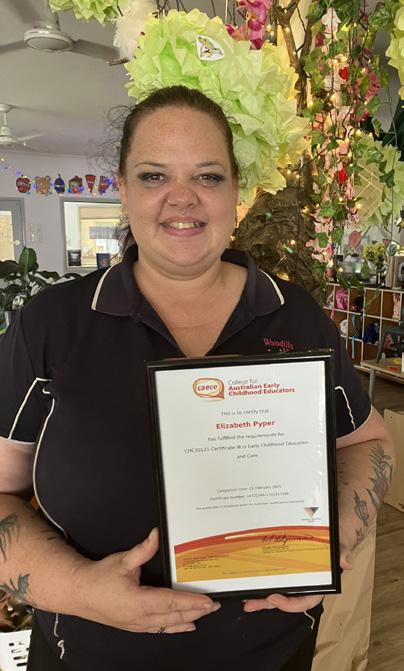
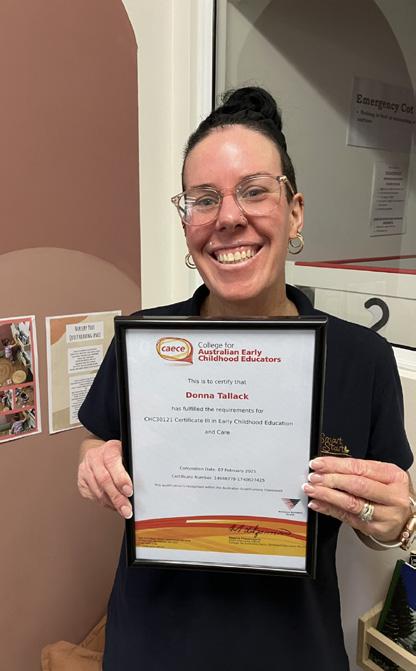
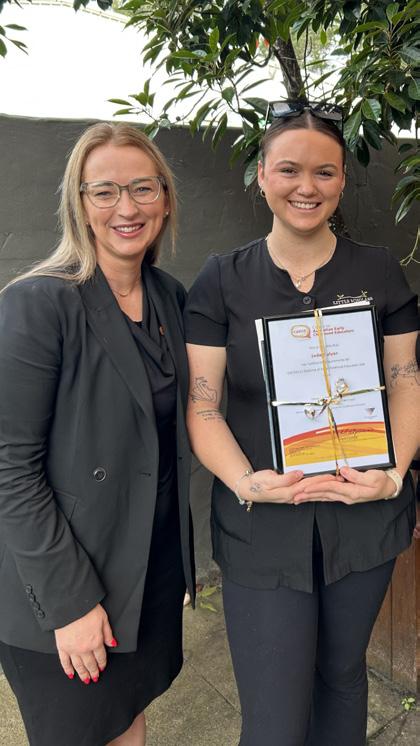
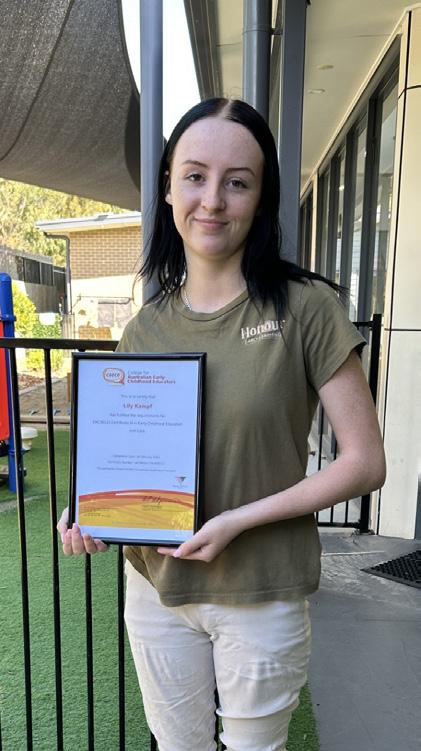
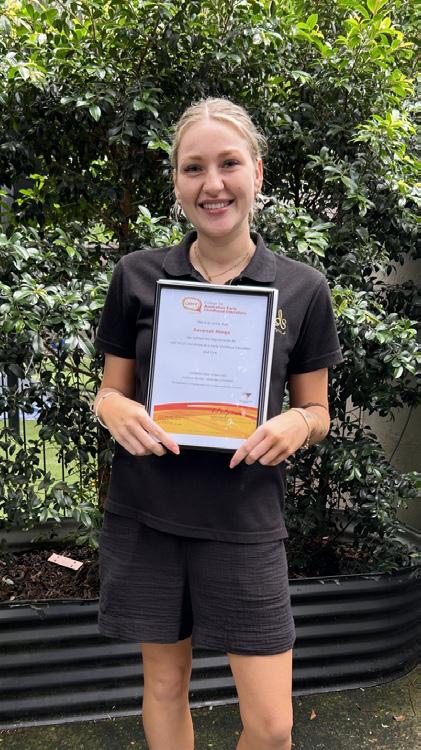
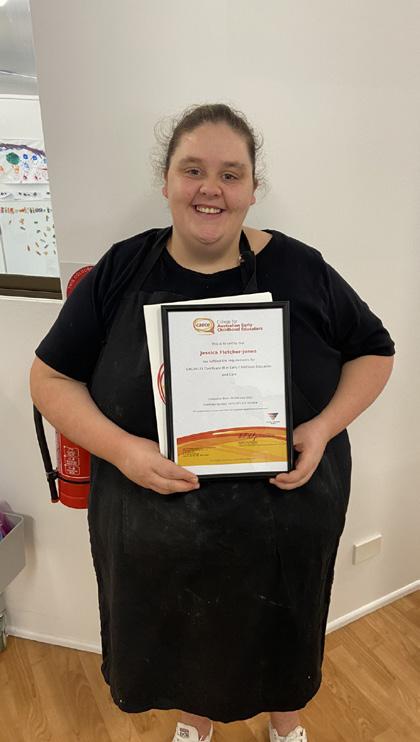

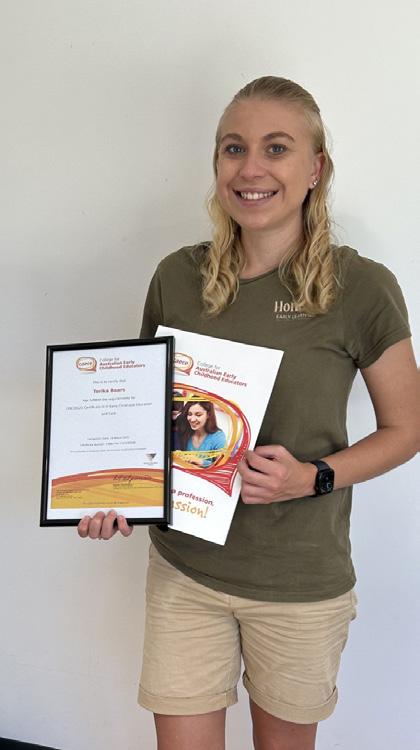
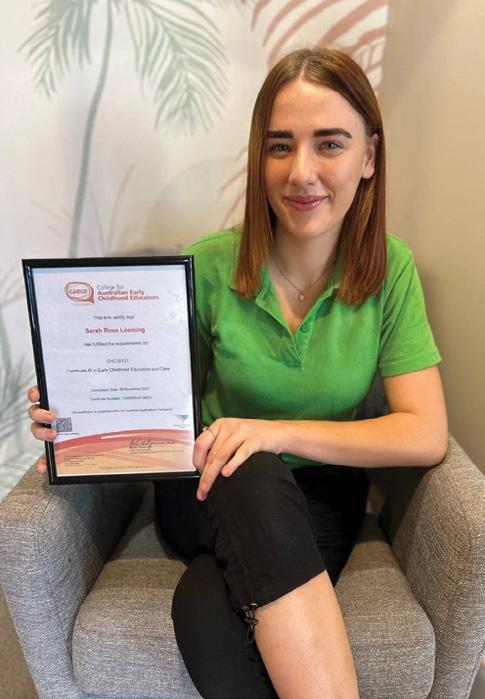
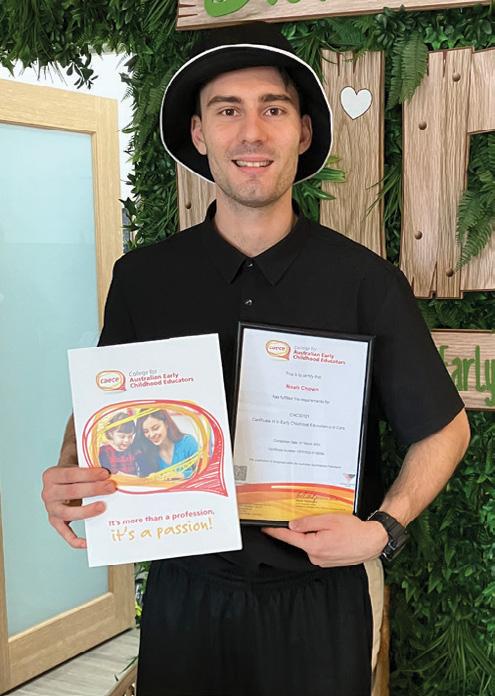
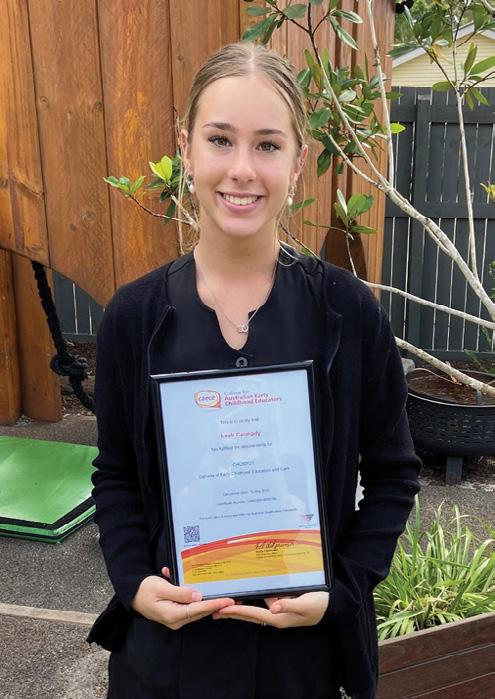
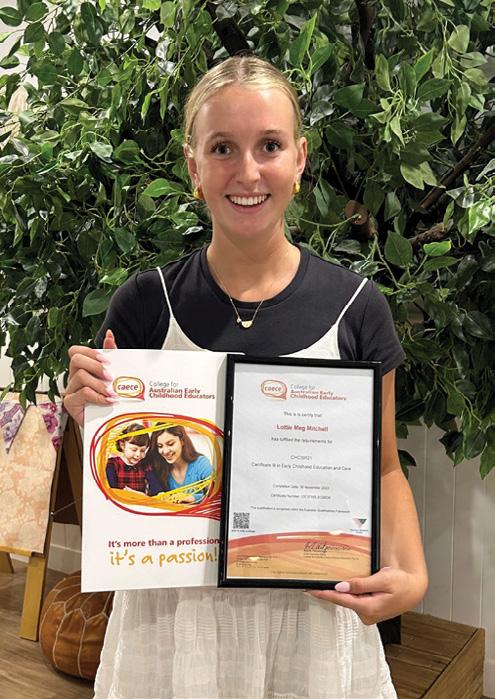
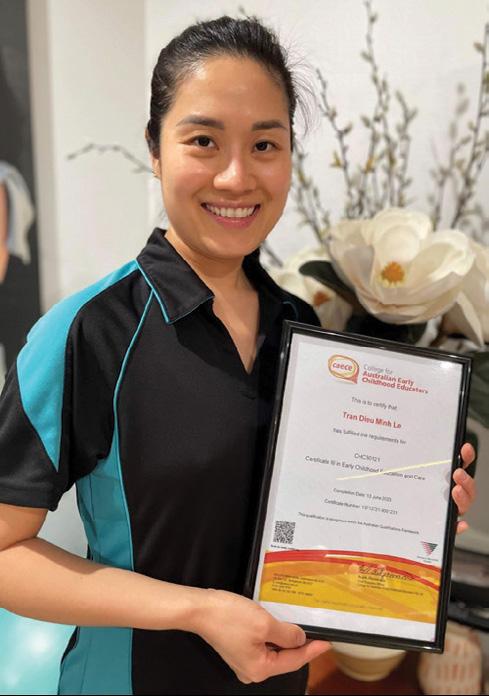
Study your way: a blend of online, workplace and study sessions
Supported by experienced trainers
Connect with industry leaders
Become a quality educator





Kids and Adults Learning (KAL) Michelle Bamberry info@kal.net.au
Indyforms
Kidsoft
Scanlan dan@indyforms.com
lauren@kidsoft.com.au
Rubiks iT Andre Campbell andrecampbell@rubiksit.com.au
rubiksit.com.au Xap Childcare Solutions Sean Murphy sean@xap.com.au
Dental2you Larissa Curtis admin@dental2you.net
Little Sports Heroes George Giannakopoulo george@littleheroesaustralia.com
Physi Kids
Kayleen Tolley info@physikids.com.au
559 997 physikids.com.au
The Wellbeing Food Company Brad Teys brad@wellbeingfood.com.au 0411 733 555 wellbeingfood.com.au
Yoga Bears Kids Yoga Simon Kerle simon@yogabearskidsyoga.com.au
420 041 yogabearskidsyoga.com.au Staff Recruitment
Expect A Star Amanda Lawson amanda@expectastar.com.au
Save Our Service Helena Bourolias marketing@saveourservice.com.au
Z Staffing Katrina O’Callaghan juliette@zstaffing.com.au
669 653 expectastar.com.au
922 782 zstaffing.com.au Toys, Resources & Suppliers
ABC School Supplies
Childcare Cleaning Supplies (Compliant Cleaning)
Daycare Swaggies
Sobhana Bali info@abcschoolsupplies.com.au
Matt King sales@compliantcs.com.au
2999 abcschoolsupplies.com.au
314 491 compliantcs.com.au
Jessica Feeney hello@daycareswaggies.com daycareswaggies.com
Education National Jenny Ryan jenny@educationnational.com.au
3013 1221 educationnational.com.au
EducationAll Australia Julie Rowan julie@educationall.com.au 1300 044 984 educationall.com.au
H Pro Pty Ltd
Macrosphere Pty Ltd
William White william@hpro.com.au
3041 4132 hpro.com.au
Margaret Robbins mrobbins@macrosphere.com.au 07 3102 1111 macrosphere.com.au
Play To Learn Lisa Clements lisa@playtolearn.com.au
PSE Preschool Equipment Karen Clark info@preschoolequipment.com.au
Starex Inspiring Manufacturing Monique Denham monique@starex.com.au
Step4 Melinda Neal melinda@step4.com.au
Training Providers
ACE Community College Robyn Keenan Robyn.k@acecolleges.edu.au
ACTAC - Australian College of Teacher Aides and Childcare Erin Winsbury ewinsbury@actac.com.au
644 837 playtolearn.com.au
555 972 preschoolequipment.com.au
3709 3336 starex.com.au
126 714 step4.com.au
5520 3026 acecolleges.edu.au
511 455 actac.com.au
Bush Kindy Australia Bec Burch hello@bushkindyaustralia.com.au 0473 021 887 bushkindyaustralia.com.au
CAECE - College for Australian Childhood Educators Student Support Team contact@caece.com.au
Custom Data Solutions
Tracey Jory tracey@customdata.com.au
ECTARC (Early Childhood Training and Resource Centre) Anita Kumar info@ectarc.com.au
Farran Street Education Adrian McLean education@farranstreet.com.au
Food Safety eLearning Academy Graham Henrickson ghenrickson@fsea.au
Happy Team Culture Pty Ltd Danielle Peters danielle@happyteamculture.com
In Safe Hands Educators in Safety Michael Pecic enquiries@insafehands.net.au
OSCAR Care Group
3299 5784 caece.com.au
397 765 customdata.com.au
3290 2966 ectarc.com.au
366 896 farranstreeteducation.com.au
491 485 fsea.au
900 790 happyteamculture.com
794 644 insafehands.net.au
Nicole Buettel info@oscarcaregroup.com.au 03 9560 1844 oscarcaregroup.com.au
Phoenix Support for Educators Sandi Phoenix admin@phoenix-support.com.au 1300 361 243 phoenix-support.com.au
Valuers
Herron Todd White Simon Fox simon.fox@htw.com.au
3002 0900 htw.com.au